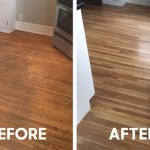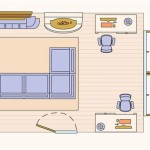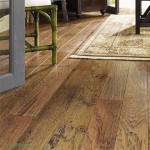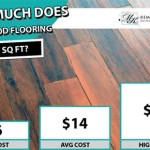Best Flooring Options for an Outdoor Patio
Selecting the appropriate flooring for an outdoor patio involves considering various factors, including durability, weather resistance, aesthetics, maintenance requirements, and budget. The ideal choice will create a comfortable and visually appealing outdoor space that withstands the elements and meets the homeowner's specific needs. This article will examine several popular patio flooring options, highlighting their respective advantages and disadvantages to aid in making an informed decision.
Concrete Pavers: Versatility and Durability
Concrete pavers are a widely used material for patios due to their strength, versatility, and relatively low cost. These manufactured stones come in a broad range of shapes, sizes, colors, and textures, allowing for diverse design possibilities. They can mimic the appearance of natural stone, brick, or even wood, providing aesthetic flexibility to complement various architectural styles.
One of the primary advantages of concrete pavers is their durability. They are engineered to withstand heavy foot traffic, freeze-thaw cycles, and exposure to UV radiation. When properly installed, concrete paver patios can last for decades with minimal maintenance beyond occasional cleaning and sealing. The interlocking design of paver installations also contributes to their structural integrity, reducing the likelihood of cracking or shifting over time.
Installation of concrete pavers typically involves preparing a compacted base of gravel and sand, followed by the careful placement of the pavers according to a desired pattern. While DIY installation is possible, professional installation is often recommended to ensure proper leveling, drainage, and compaction, which are crucial for the long-term performance of the patio. Furthermore, professional installers can provide expertise in selecting the appropriate paver thickness and base materials for the specific soil conditions and anticipated use of the patio.
From a maintenance perspective, concrete pavers are relatively easy to care for. Regular sweeping or rinsing with water can remove dirt and debris. Stains can typically be cleaned with a mild detergent and a scrub brush. Sealing the pavers periodically can enhance their resistance to staining, fading, and water penetration. Sealing also helps to prevent the growth of mold and mildew in damp environments. While sealing requires an additional investment of time and resources, it can significantly extend the lifespan and maintain the aesthetic appeal of the paver patio.
The cost of concrete pavers can vary depending on the size, shape, color, and texture of the chosen pavers, as well as the complexity of the installation. Plain, basic pavers are generally more affordable than those with intricate designs or specialized finishes. Installation costs will also vary depending on the scope of the project and the labor rates in the area. Despite the initial investment, the long-term durability and low maintenance requirements of concrete pavers often make them a cost-effective choice for patio flooring.
Natural Stone: Timeless Elegance and Unique Character
Natural stone offers a timeless and elegant aesthetic for outdoor patios, imparting a sense of natural beauty and unique character. Common types of natural stone used for patios include slate, flagstone, limestone, granite, and travertine. Each type of stone has its own distinct appearance, texture, and properties, allowing homeowners to select a material that aligns with their personal preferences and the overall design of their outdoor space.
Slate, for example, is known for its layered appearance, natural clefting, and variety of colors, ranging from dark grays and blacks to earthy reds and greens. Flagstone is characterized by its irregular shapes and textured surface, providing a rustic and organic look. Limestone is a sedimentary rock that offers a softer, more uniform appearance, with a range of colors from light beige to soft gray. Granite is a durable and hard igneous rock that is resistant to scratching and staining, making it a suitable choice for high-traffic areas. Travertine is a type of limestone distinguished by its porous texture and warm, earthy tones.
The primary advantage of natural stone is its inherent beauty and unique character. No two stones are exactly alike, creating a one-of-a-kind patio surface. Natural stone also offers excellent durability and resistance to weathering, ensuring that the patio will withstand the elements for many years. Some types of natural stone, such as granite, are particularly resistant to scratching and staining, making them ideal for outdoor kitchens or dining areas.
Installation of natural stone can be more complex and labor-intensive than installing concrete pavers. Due to the irregular shapes and varying thicknesses of natural stone, careful selection and placement are required to achieve a level and stable surface. Mortar is often used to set the stones in place, providing a strong and durable bond. Professional installation is highly recommended to ensure proper leveling, drainage, and mortar application. Experienced installers can also provide guidance on selecting the appropriate type of stone and installation techniques for the specific site conditions and climate.
Maintenance of natural stone patios typically involves regular sweeping or rinsing to remove dirt and debris. Some types of natural stone, such as limestone and travertine, may require sealing to protect them from staining and water damage. Sealing can also help to enhance the color and appearance of the stone. The frequency of sealing will depend on the type of stone, the level of exposure to the elements, and the specific sealer used. It's important to follow the manufacturer's instructions when applying sealant to ensure optimal results.
The cost of natural stone can vary significantly depending on the type of stone, its availability, and the complexity of the installation. Granite and slate are generally more expensive than limestone and flagstone. Installation costs will also be higher due to the increased labor required for handling and setting the stones. While natural stone may represent a higher initial investment than concrete pavers, its timeless beauty, durability, and unique character make it a worthwhile option for homeowners seeking a high-end patio surface.
Wood Decking: Warmth and Natural Appeal
Wood decking provides a warm and natural aesthetic for outdoor patios, creating a comfortable and inviting space for relaxation and entertainment. Wood decking is available in a variety of wood species, including redwood, cedar, pressure-treated pine, and tropical hardwoods like ipe and teak. Each wood species has its own distinct appearance, durability, and resistance to decay and insect infestation.
Redwood and cedar are naturally resistant to decay and insects, making them a popular choice for outdoor decking. They also have a beautiful reddish-brown color and a pleasant aroma. Pressure-treated pine is a more affordable option, but it requires regular maintenance to protect it from decay and insect infestation. Tropical hardwoods like ipe and teak are exceptionally durable and resistant to weathering, making them a long-lasting choice for patio decking, though they are also significantly more expensive.
The primary advantage of wood decking is its warm and natural appearance. Wood decking can create a comfortable and inviting atmosphere for outdoor living. It is also relatively easy to work with, making it a suitable option for DIY installation, provided that the homeowner has the necessary skills and tools. Furthermore, wood decking can be stained or painted to achieve a desired color or finish.
Installation of wood decking typically involves constructing a supporting frame of joists and beams, followed by the attachment of the deck boards to the frame using screws or nails. Proper spacing between the deck boards is crucial to allow for expansion and contraction due to changes in temperature and humidity. Adequate ventilation beneath the deck is also essential to prevent moisture buildup and decay. When constructing a deck adjacent to a house proper flashing techniques need to be incorporated to prevent water intrusion.
Maintenance of wood decking is essential to preserve its appearance and prolong its lifespan. Regular cleaning with a deck wash or mild detergent is necessary to remove dirt, debris, and mildew. Staining or sealing the deck periodically can protect it from UV radiation, water damage, and insect infestation. The frequency of staining or sealing will depend on the type of wood, the level of exposure to the elements, and the specific stain or sealer used. It's important to follow the manufacturer's instructions when applying stain or sealer to ensure optimal results. For pressure-treated lumber, periodic application of a wood preservative is recommended.
The cost of wood decking can vary depending on the type of wood, the size of the deck, and the complexity of the installation. Tropical hardwoods like ipe and teak are the most expensive, while pressure-treated pine is the most affordable. Installation costs will also vary depending on the scope of the project and the labor rates in the area. While wood decking may require more maintenance than concrete pavers or natural stone, its warm and natural appeal makes it a popular choice for homeowners seeking a comfortable and inviting outdoor space.
Composite Decking: Low Maintenance and Durability
Composite decking offers a low-maintenance and durable alternative to traditional wood decking. Composite decking is made from a combination of wood fibers and recycled plastic, creating a material that is resistant to rot, decay, insect infestation, and splintering. It is available in a variety of colors, textures, and styles, mimicking the appearance of natural wood without the need for frequent maintenance.
One of the primary advantages of composite decking is its low maintenance requirements. Unlike wood decking, composite decking does not require staining or sealing. It is also resistant to fading and staining, ensuring that it will maintain its appearance for many years. Regular cleaning with soap and water is typically all that is needed to keep composite decking looking its best.
Composite decking is also highly durable and long-lasting. It is resistant to weathering, including exposure to UV radiation, moisture, and extreme temperatures. It will not rot, decay, or splinter, providing a safe and comfortable surface for outdoor living. Composite decking is also environmentally friendly, as it is made from recycled materials and reduces the demand for virgin wood.
Installation of composite decking is similar to that of wood decking, requiring a supporting frame of joists and beams. However, composite decking boards are typically lighter and easier to handle than wood decking boards, making the installation process somewhat simpler. Proper spacing between the deck boards is still crucial to allow for expansion and contraction, and adequate ventilation beneath the deck is essential to prevent moisture buildup.
While composite decking is more expensive than pressure-treated pine, it is often comparable in cost to redwood or cedar. The long-term cost of composite decking is typically lower than that of wood decking due to its reduced maintenance requirements. Homeowners can save money on staining, sealing, and other maintenance costs over the lifespan of the deck. Additionally, the increased durability of composite decking can extend the life of the deck, reducing the need for replacement.
Potential disadvantages of composite decking include its appearance, which may not be as natural or authentic as that of real wood. Some composite decking products can also become hot in direct sunlight, making them uncomfortable to walk on barefoot. It's important to choose a high-quality composite decking product that is designed to resist heat buildup and maintain its color and appearance over time.
Brick: Classic Charm and Lasting Appeal
Brick offers a classic and timeless aesthetic for outdoor patios, providing a durable and long-lasting surface with a charming and traditional appeal. Brick is a clay-based material that is fired at high temperatures, creating a hard and durable product that is resistant to weathering and wear. It is available in a variety of colors, textures, and sizes, allowing for diverse design possibilities.
One of the primary advantages of brick is its durability and longevity. Brick patios can last for decades with minimal maintenance. Brick is resistant to cracking, fading, and staining. While bricks themselves are extremely durable, the mortar joints can be susceptible to degradation over time, especially in climates with frequent freeze-thaw cycles. Regular inspection and repair of the mortar joints are essential to maintain the integrity of the patio.
Brick also offers excellent aesthetic appeal. Its classic and traditional look complements a wide range of architectural styles. The modular nature of brick allows for intricate patterns and designs, adding visual interest to the patio surface. Brick is also relatively easy to clean, requiring only occasional sweeping or rinsing with water. Stains can typically be removed with a mild detergent and a scrub brush. When selecting brick, it's important to choose a type that is specifically designed for outdoor use. These bricks are manufactured to be more resistant to weathering and freeze-thaw cycles than interior bricks.
Installation of brick patios involves preparing a compacted base of gravel and sand, followed by the placement of the bricks in a desired pattern. Mortar is typically used to set the bricks in place, providing a strong and durable bond. Professional installation is recommended to ensure proper leveling, drainage, and mortar application. Experienced installers can also provide guidance on selecting the appropriate type of brick and installation techniques for the specific site conditions and climate.
The cost of brick patios can vary depending on the type of brick, the complexity of the design, and the labor rates in the area. Clay bricks are generally more expensive than concrete pavers, but their durability and classic appeal can make them a worthwhile investment. Installation costs will also be higher due to the increased labor required for handling and setting the bricks. Depending on the region, salvaged or reclaimed bricks may be an option, providing a unique aesthetic at a potentially lower cost.

Which Tiles Are Best For Outdoor Flooring Walls And Floors

The 5 Best And Worst Flooring For An Outdoor Patio

11 Fantastic Patio Flooring Ideas To Transform Your Home

Best Outdoor Flooring For Patios Or Terraces Rubi Blog Usa

5 Best Outdoor Tile Ideas For Your Patio

The Complete Guide To Choosing Best Outdoor Tile

11 Fantastic Patio Flooring Ideas To Transform Your Home

Outdoor Patio Tiles 10 Best Ideas The Family Handyman

Outdoor Patio Flooring A Long Lasting Solution Eco Grind

Best Outdoor Flooring For Patios Terraces And Swimming Pool







